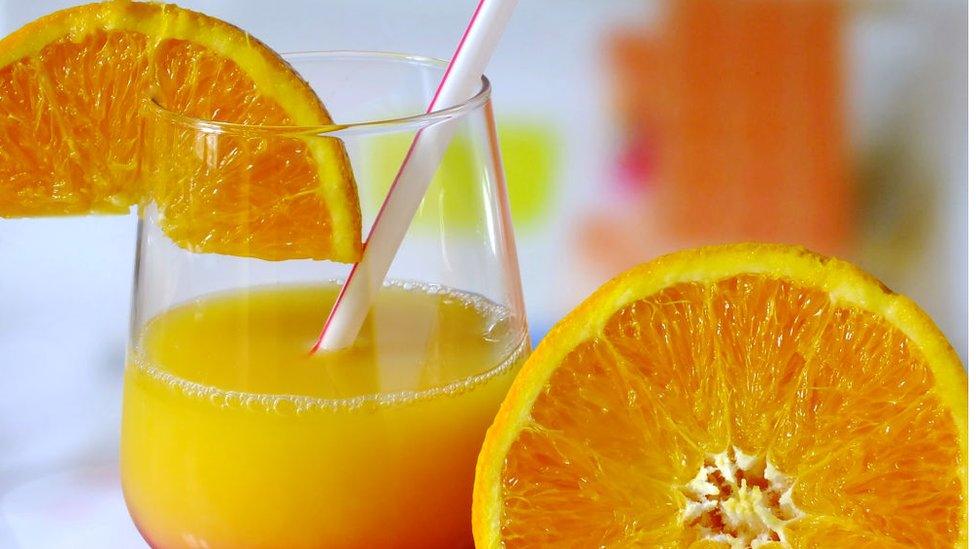Why orange juice prices are soaring on global markets
- Published

The future price of orange juice has spiked by more than 20% this month as consumers look for healthy products during the coronavirus pandemic.
While demand has risen, supply has been hit as producers struggle to export goods due to transport restrictions.
This has caused a rise in the so-called "futures" price of orange juice, which indicate its cost for delivery in the coming months.
Orange juice futures are the best performing asset so far this year.
"The Covid 19 outbreaks are hitting both the supply and demand for orange juice. The immune-boosting properties are the demand side attraction while there are simply not enough tanker spaces, with airlines not flying, to bring the product to markets," said Stephen Innes, chief global market strategist at broker AxiCorp.
On the supply side, there are also issues with not having enough workers as plantations introduce restrictions such as social distancing. "Traders are wondering if workers are around to man the plants here in Florida and in Brazil," said Jack Scoville at trading firm Price Futures Group in the US.
Orange juice futures have seen their biggest monthly gain since October 2015, at a time when global stock markets are being battered. In London, the FTSE 100 index is down more than 13% in the last month, while on Wall Street the Dow Jones Industrial Average has fallen more than 16%.
Talking about whether the spike in orange juice futures prices will mean higher prices for orange juice in stores, Mr Innes added: "The pass-on effect will be quick as orange juice producers pass the price rises onto to supermarkets and other buyers".
Most commodities have a "future" price, which can be traded on an exchange, such as the Intercontinental Exchange (ICE). Futures contracts help companies lock into a fixed price in the future to protect them from potential spikes in prices.
Futures contracts are common for soft commodities like oranges and wheat which are vulnerable to sudden price rises due to bad harvests and natural disasters.
- Published9 November 2016
